
- Chinese Mythology

Journey to the West: Unveiling the Mythical Saga
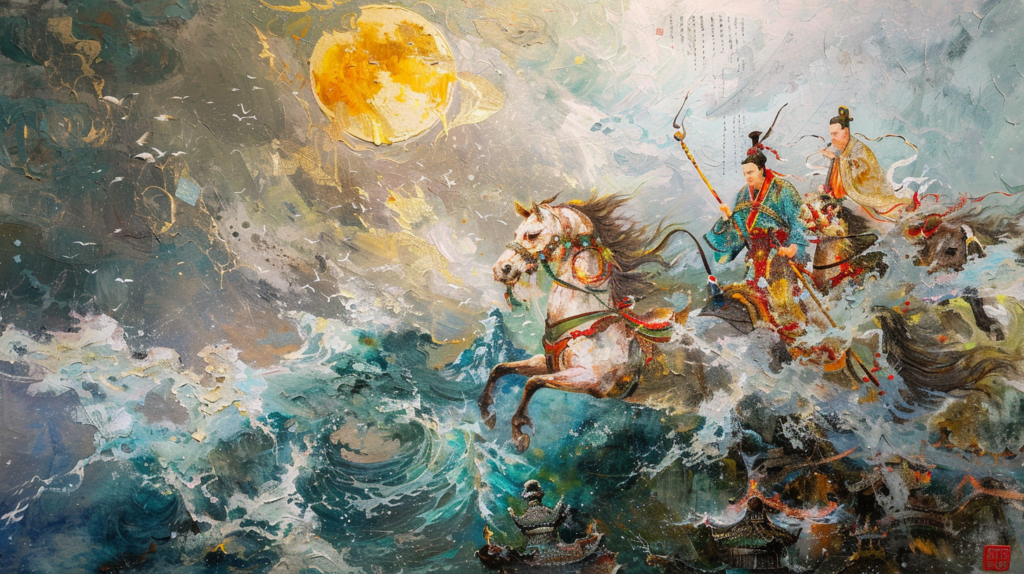
Journey to the West ( 西游记 , Xīyóu Jì ), stands as an iconic pillar within Chinese literature. Renowned across East Asia, this masterpiece narrates the captivating saga of the Buddhist monk, Tang Sanzang (唐三藏), accompanied by his three unique disciples: the audacious monkey king Sun Wukong (孙悟空), the jovial pig spirit Zhu Bajie (猪八戒), and the steadfast sand demon Sha Wujing (沙悟净). Together, they embarked on a perilous journey to India, driven by the noble quest to retrieve sacred scriptures. Their path is fraught with many trials, adversaries, and mystical beings, making their adventure not just exhilarating but profoundly symbolic.
This literature does more than entertain. Journey to the West delves deep into the essence of religion, morality, friendship, and the human condition. It is a satire of the Chinese society and bureaucracy, offering a spiritual odyssey and an allegorical quest for enlightenment. Packed with cultural, historical, and folkloric gems, it reflects the boundless creativity of its author.
This article aims to unfold the enthralling story of Journey to the West , guiding its inception, authorship, narrative, characters, symbolism, impact, and adaptations. Whether you’re a connoisseur or a newcomer eager to explore, join us on this remarkable exploration.
Origins and Authorship
Journey to the West is a masterpiece that seamlessly blends a rich tapestry of literary and cultural traditions, drawing from various sources, including folk tales, legends, myths, historical narratives, religious scriptures, and earlier fictional works. The primary inspiration behind this enchanting novel is the real-life pilgrimage of the Buddhist monk Xuanzang (602–664) to India in the 7th century, on a quest for sacred texts. Xuanzang’s detailed chronicles, titled Great Tang Records on the Western Regions , lay the groundwork for the storyline and introduce some of the characters.
The narrative is greatly enriched by the addition of fantastical elements from folklore and the author’s own creative flair, showcasing the extraordinary powers and unique personalities of the monk’s disciples – the formidable monkey king Sun Wukong , the pig spirit Zhu Bajie , and the sand demon Sha Wujing – along with their thrilling encounters with a host of gods, demons, and mythological beings. The novel also interweaves elements from other literary creations, such as the poetic novelette The Story of How Tripitaka of the Great Tang Procures the Scriptures , composed by an anonymous writer in the 13th century, and the six-part drama The Journey of the Monk Tripitaka of the Great Tang Dynasty , authored by Yang Jingxian in the 16th century.
Journey to the West was created during the Ming dynasty (1368-1644), a period marked by political stability, economic prosperity, and a flourishing of the arts. The novel reflects the cultural, social, and religious landscape of the time, including the popularity of vernacular literature, the influence of Buddhism, and the examination system that shaped Chinese society. It also mirrors the influence of Chinese folk religion , Chinese mythology , Confucianism , and Taoism , effectively capturing the beliefs, traditions, and ethics of the Chinese populace.
The question of who wrote Journey to the West remains open to debate, given the absence of definitive evidence. Initially written and published anonymously in the 1590s, the novel has been largely attributed to Wu Cheng’en (1506?–1582?), a renowned novelist and poet from the Ming period, since the 20th century. However, this attribution is not without its challengers, with some scholars proposing alternative authors such as Xu Zhonglin , Luo Guanzhong , or even suggesting the possibility of multiple anonymous contributors. It is plausible that Journey to the West is the culmination of a prolonged evolution of storytelling, undergoing countless revisions and embellishments by a series of authors and editors across several centuries.
Structure and Narrative Flow
Journey to the West, a 100-chapter novel divided into four volumes, is structured in a way that symbolizes completeness and perfection, reflecting the characters’ spiritual transformation. The novel can be divided into three main sections:
The first seven chapters introduce the Monkey King, Sun Wukong, and his acquisition of magical powers.
The next five chapters focus on Xuanzang (Tripitaka) and the divine origins of his pilgrimage to India to retrieve sacred Buddhist sutras.
The remaining 88 chapters recount the 81 adventures of Xuanzang and his three disciples – Sun Wukong, Zhu Bajie (Pigsy), and Sha Wujing (Sandy) – as they journey to India, facing numerous challenges and demons along the way.
The final chapters depict the pilgrims’ attainment of the sacred scrolls, marking the successful completion of their mission and symbolizing their personal growth and enlightenment. The novel’s structure enhances the narrative’s epic nature and highlights the characters’ transformative journey.

The Heart of the Saga: A Synopsis
Journey to the West is an epic novel that charts the remarkable adventures of Tang Sanzang, a devout Buddhist monk. He embarks on a perilous voyage from China to India with a mission to retrieve the sacred Buddhist scriptures. Alongside him are three exceptional disciples: Sun Wukong, the tempestuous yet potent Monkey King; Zhu Bajie, the hedonistic pig spirit with a penchant for indulgences; and Sha Wujing, the steadfast and silent sand demon. Their journey is fraught with daunting challenges and formidable adversaries, all in the quest for enlightenment.

Pilgrimage for Enlightenment
The tale unfolds with Sun Wukong’s birth, a being who masters supernatural powers and crowns himself the “Great Sage Equal to Heaven”. His havoc in the heavens earns him imprisonment by the Buddha beneath a mountain. Concurrently, Tang Sanzang, a young and virtuous monk, is chosen by the Bodhisattva Guanyin for an epic journey West. Equipped with a magical headband to ensure Sun Wukong’s obedience, Tang Sanzang embarks on his quest, during which he liberates Sun Wukong and gathers his other companions, Zhu Bajie and Sha Wujing. Additionally, he acquires a white dragon horse, revealed to be the transformed third son of the Dragon King of the West Sea, to serve as his loyal steed.
Encounters with Demons and Deities
Composed of 100 chapters, the novel weaves through diverse and thrilling episodes encountered by the pilgrims. They face many demons, monsters, and spirits, all coveting Tang Sanzang’s flesh, believed to bestow immortality. Encounters also bless their journey with friendly deities, sages, and hermits who aid or evaluate their virtues and faith. Memorable moments include battles with the Bull Demon King, rescuing Princess Iron Fan, the daunting Flaming Mountains, skirmishes with the formidable Red Boy, defeating the Spider Women, an intriguing visit to the Women’s Kingdom, confronting the White Bone Demon, and the significant arrival at the Thunder Monastery.
Enchanting Characters and Their Symbolism

Journey to the West is a beloved novel brimming with a cast of enchanting characters , each bringing their own unique personality, backstory, and purpose to the narrative. These main characters aren’t just entertaining and unforgettable; they’re also deeply symbolic. They embody various facets of human nature, reflecting the diverse stages and obstacles encountered in a spiritual odyssey. By delving into their traits and actions, we unlock a richer comprehension of the novel’s underlying themes and messages.
Sun Wukong/Monkey King: Rebellion and Redemption
Sun Wukong, better known as the Monkey King, is the novel’s most celebrated and iconic figure. This extraordinary monkey, born from a stone egg, attains remarkable powers through sheer determination and curiosity. He frequently defies the celestial realm’s authority because of his rebelliousness, wit, arrogance, and fearlessness. Despite this, he’s also depicted as loyal, courageous, clever, and astute, consistently safeguarding his master and peers from various perils. As the group’s leader and guardian, his dynamic prowess shines through.
Symbolizing the mind and the yang principle—the active and creative force in nature—Sun Wukong’s name translates to “awakened to emptiness,” mirroring his enlightenment on the truth of existence. He epitomizes the dual themes of rebellion and redemption, evolving from a disruptor to a Bodhisattva, a being dedicated to the enlightenment of all. His journey offers a metaphor for the cultivation of wisdom and compassion, as well as the transcendence of ego and attachment.
Tang Sanzang/Tripitaka: The Embodiment of Faith and Purity
Tang Sanzang, also known as Tripitaka, is the tale’s protagonist and heart. Selected by the Bodhisattva Guanyin for the treacherous mission to acquire Buddhist sacred texts from the West, his character is the embodiment of humility, compassion, and devotion. Adhering strictly to his faith’s principles, he nevertheless often finds himself the target of demons and monsters, due to his naive and gentle nature. He embodies the roles of master and teacher, albeit as the most vulnerable member of the expedition.
Tang Sanzang represents the heart and the yin principle—the passive and receptive force. His name, meaning “three baskets,” alludes to the Buddhist canon’s tripartite division. He personifies the ideals of faith and purity, persevering against all manner of trials and tribulations. His quest symbolizes the pursuit of merit and virtue, along with the purification of karma and defilements.
Zhu Bajie/Pigsy and Sha Wujing/Sandy: Human Flaws and Spiritual Growth
Zhu Bajie, or Pigsy, and Sha Wujing, known as Sandy, serve as Tang Sanzang’s other two disciples. Once celestial beings, they were relegated to the mortal world due to their transgressions. Zhu Bajie, a pig spirit formerly known as the Marshal of the Heavenly Canopy, faced expulsion for his lustful conduct. He embodies human-like flaws, such as greed, laziness, gluttony, and lechery. Yet, he also displays strength, bravery, humor, and helpfulness, engaging in battle with his distinctive rake and keen sense of smell.
Zhu Bajie symbolizes the body and the human tendency to seek pleasure through the senses. His name, translating to “eight precepts,” refers to the foundational ethical guidelines for lay Buddhists. He illustrates the struggle for spiritual growth, striving to conquer his weaknesses and vices. His path serves as a metaphor for temperance and promoting generosity and morality.
Sha Wujing, a once-proud Curtain-Lifting General demoted for his indiscretion, is a quiet, loyal, and hardworking sand demon. Despite his former life as a violent entity preying on travelers, as Tang Sanzang’s disciple, he transforms into a stalwart protector. This transformation makes him a figure of potential redemption and spiritual awakening.
Symbolizing the spirit, Sha Wujing’s name—meaning “awakened to purity”—highlights his commitment to purifying his mind and soul. He represents the human capacity for profound change, moving from a malevolent being to a guardian. His narrative underscores the journey toward the enlightenment of wisdom and the emancipation from suffering and ignorance.
Literary Legacy and Adaptations
Journey to the West is not just a story; it’s a cultural phenomenon transcending time and geography. This masterpiece has been translated into numerous foreign languages press. It has sparked many adaptations across the world and a wide range of art forms, including theater, film, television, manga, animation, video games, and music.
The novel is written in vernacular Chinese, making it accessible to a wide audience. It employs a mix of prose and poetry, with each chapter beginning with a poem that summarizes the events to follow. The author also uses various linguistic devices, such as puns, wordplay, and allusions to other works, adding depth and humor to the narrative.
Global Reach and Notable Translations
The journey of Journey to the West began internationally in the late 18th century with its first translation into French by Jesuit missionary Jean-Joseph-Marie Amiot. Since then, its stories have been embraced globally and translated into languages such as English, German, Russian, Japanese, Korean, Vietnamese, Thai, and Arabic. Noteworthy translations include:
Arthur Waley’s pioneering complete English translation, Monkey: A Folk Tale of China, was delivered in four volumes from 1942 to 1958.
An extensively annotated English version by Anthony C. Yu, published in four volumes between 1977 and 1983, named The Journey to the West .
A comprehensive and abridged English rendition by W.J.F. Jenner, published in 1982, also titled Journey to the West .
The modernized English translation by Julia Lovell, released in 2012, under the label Monkey King: Journey to the West .
Adaptations Across Media
The novel’s journey continues through various media, including stage plays, films, TV series, manga, animations, video games, and music, demonstrating its broad appeal. Some of the most celebrated adaptations are:
The Monkey King , a 1986 TV series by CCTV, with Liu Xiao Ling Tong portraying Sun Wukong . This adaptation is celebrated for its fidelity to the novel and stands as a classic representation.
Monkey , a 1978-1980 Japanese TV series based on Arthur Waley’s translation, featuring Masaaki Sakai as Sun Wukong. Loved for its catchy theme song and humor.
Dragon Ball , a manga and anime series running from 1984 to 1995, created by Akira Toriyama and inspired by the novel. It chronicles the adventures of Son Goku, a boy with a monkey tail, drawing inspiration from Sun Wukong.
A 2007 stage musical, Monkey: Journey to the West , created by the trio of Chen Shi-Zheng, Damon Albarn, and Jamie Hewlett, marrying traditional Chinese opera with circus elements and pop music.
A Chinese Odyssey , a two-part film from 1995 directed by Stephen Chow, casting himself as Sun Wukong. This version mixes comedy and fantasy, adding elements of time travel and romance.
The 2001 Disney animated series ‘The Legend of Tarzan,’ which features a character named Sun Wukong, a monkey who assists Tarzan in his adventures, showcasing the influence of Journey to the West on Western media.
The 2017 Chinese film ‘Wu Kong,’ starring Eddie Peng as Sun Wukong, offering a modern reimagining of the classic tale with stunning visual effects and action sequences.
The 2018 video game ‘Monkey King: Hero Is Back,’ an action-adventure game that allows players to control Sun Wukong and experience the journey firsthand, demonstrating the interactive potential of the story.
Journey to the West is a cornerstone of Chinese literature, alongside other classic novels such as Romance of the Three Kingdoms, Water Margin, and Dream of the Red Chamber. While each novel has its unique style and themes, they all offer insights into Chinese history, culture, and values and continue to captivate readers worldwide.
Journey to the West is undeniably a s that everyone who cherishes literature, culture, and adventure should immerse themselves in. This masterpiece of Chinese literature isn’t just a local treasure but a global phenomenon , leaving a lasting impact on countless readers and creators across generations. This captivating stories weaves the adventures of a Buddhist monk and his three disciples on their quest from China to India to retrieve sacred Buddhist scriptures.
It delves deeply into themes such as religion, morality, loyalty, history, friendship, and the essence of human nature, enriching its narrative beyond a simple journey. The characters’ struggles and triumphs reflect the Buddhist concepts of karma, reincarnation, and the Four Noble Truths. The novel also incorporates elements of Taoism and Confucianism, highlighting the complex interplay of religious and philosophical ideas in Chinese culture.
The novel is written with a spectrum of enchanting characters , each bringing their unique personality, backstory, and significance to the story, making it an exploration that goes beyond its words. Its ability to transcend cultural and historical limits has established it as a universal and timeless piece of art.
If Journey to the West has piqued your interest, many translations and adaptations are available in numerous languages and formats. Moreover, by exploring further, you can enrich your understanding of the novel’s background, authorship, plot, characters, symbolic meanings, legacy, and various adaptations. It’s our hope that this synopsis has sparked your curiosity, inviting you to experience the magical saga of Journey to the West firsthand.
What is the story behind Journey to the West?
The story behind Journey to the West is a fictionalized account of the 7th-century pilgrimage of the Buddhist monk Xuanzang from China to India, aimed at acquiring sacred texts. Accompanied by three disciples, they encounter and overcome a series of obstacles and dangers along their path.
What is Journey to the West an allegory for?
Journey to the West serves as an allegory for the quest for enlightenment, reflecting Buddhist teachings. Additionally, it cleverly satirizes the societal norms and bureaucracy prevalent during the Ming dynasty in China.
Is Dragon Ball based on Journey to the West?
Indeed, Dragon Ball draws inspiration from Journey to the West , a renowned 16th-century Chinese novel. The character Son Goku mirrors Sun Wukong, the Monkey King, showcasing similar abilities and traits.
What reading level is Journey to the West?
The complexity of Journey to the West varies by edition. The original classic from the 16th century requires a reader to be familiar with at least 2500 Chinese characters, categorizing it as advanced. For Mandarin learners, however, there are simplified and abridged versions like the Pleco graded reader, recommended for HSK level 5, and new edition ofthe Oxford graded reader, suitable for CEFR A2 — making it more accessible and enjoyable.
Leave a Reply Cancel reply
Your email address will not be published. Required fields are marked *
Save my name, email, and website in this browser for the next time I comment.
INSIDE THIS ARTICLE
Related posts.
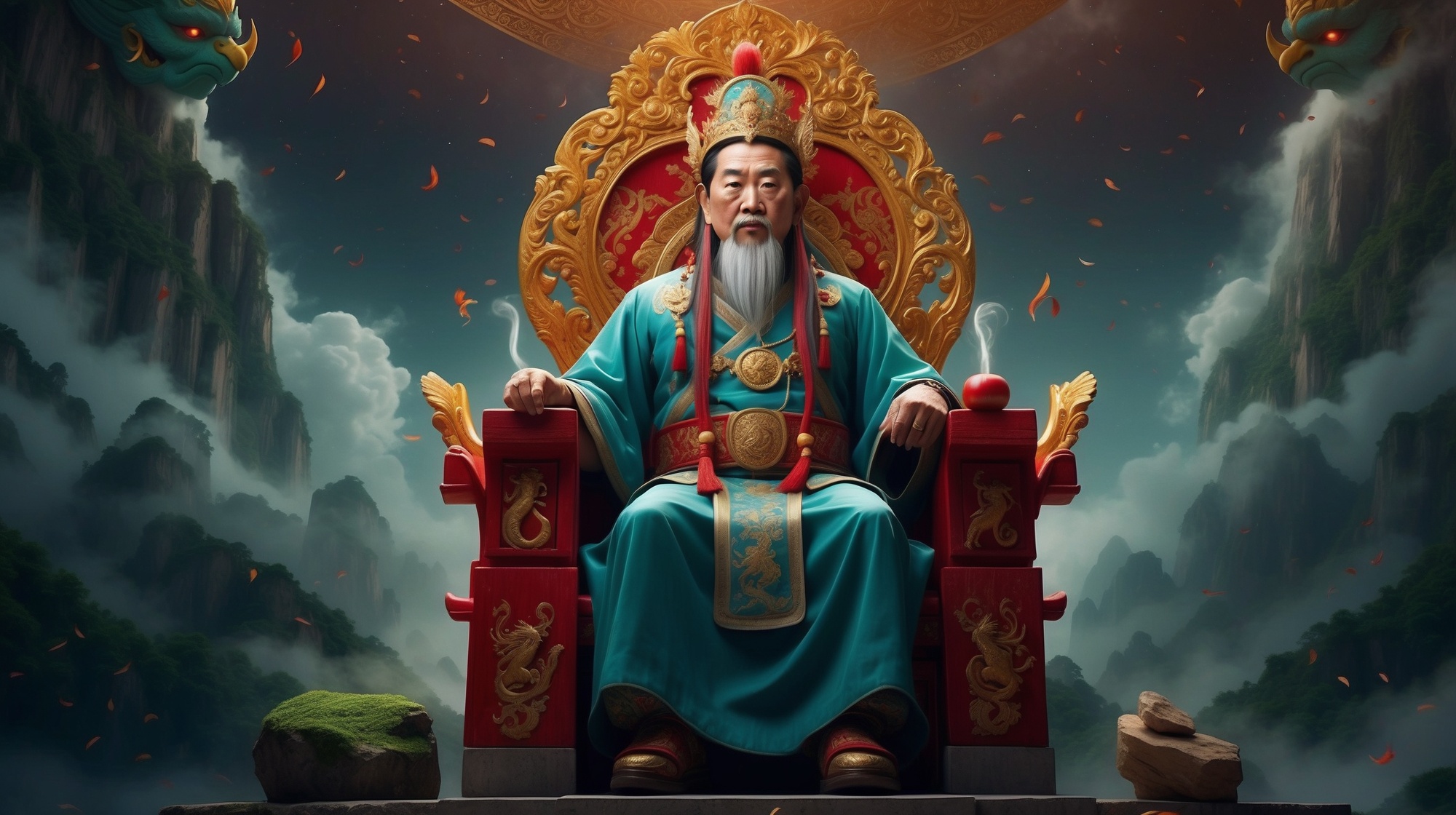
The Jade Emperor: A Journey Through Chinese Mythology
Explore the Jade Emperor, the supreme ruler of Chinese myth. This article highlights his role in cosmic order and cultural heritage, showing how he continues
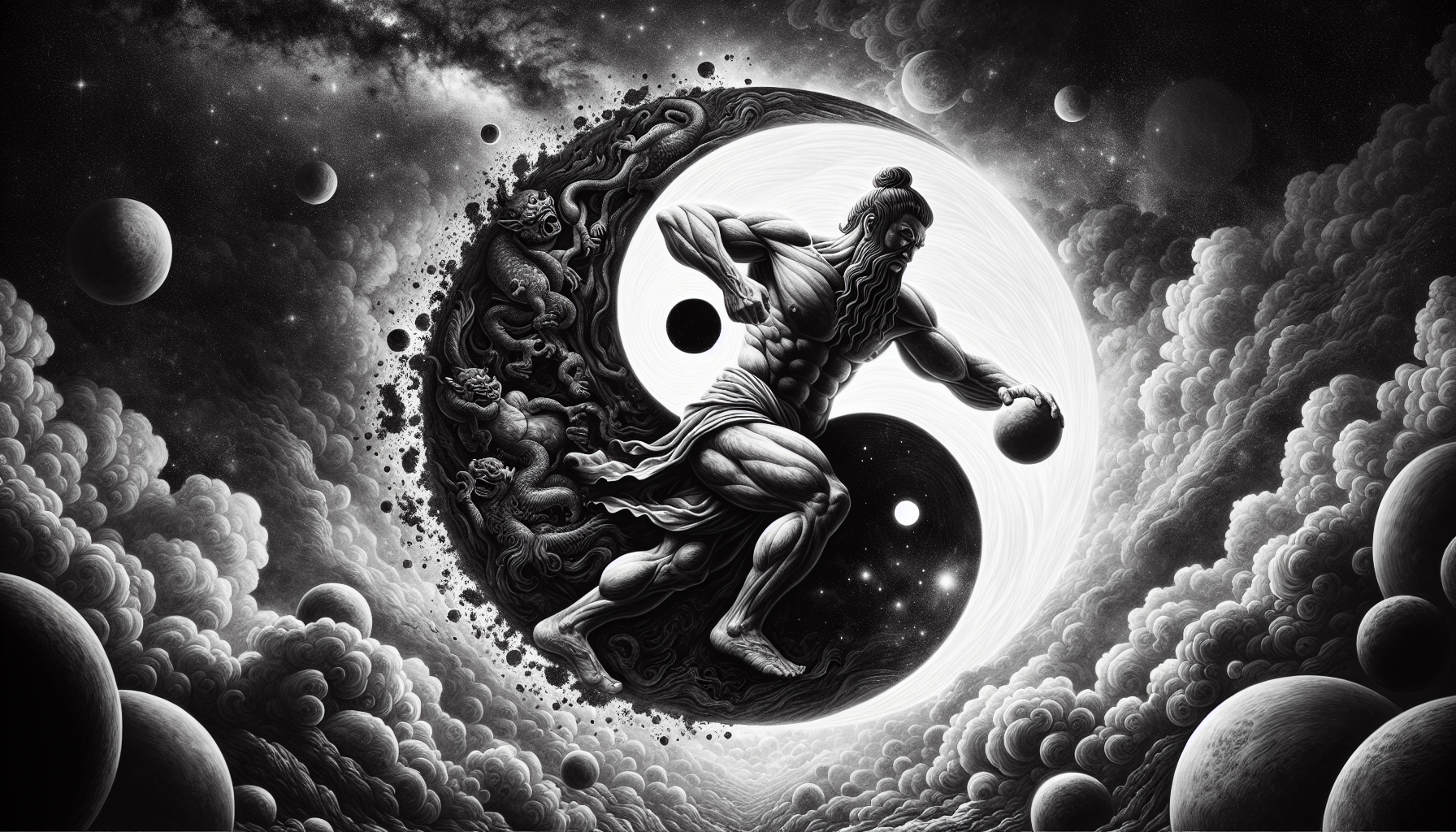
Pan Gu and the World Egg: A Chinese Creation Myth
Who was Pan Gu, and how did he forge the Chinese universe from an enigmatic world egg? Our exploration uncovers the tale of this primordial
Sign up to get the latest myths
Mythologies.
- Greek Mythology
- Celtic Mythology
- Privacy Policy
- Terms and Conditions
Archetype and allegory in "Journey to the West"
Original bundle.
License bundle
Collections.

Journey to the West | Full Story, Summary & Moral Lessons
- February 19, 2024
“Journey to the West” stands as one of the pinnacles of Chinese literature, a riveting blend of mythology, folklore, humor, and spirituality .
Authored by Wu Cheng’en in the 16th century during the Ming dynasty, this epic novel has transcended its cultural origins to become a global literary treasure!
The narrative follows the perilous journey of the Buddhist monk Xuanzang, historically known, as he travels to India to obtain sacred Buddhist scriptures. Accompanied by his three disciples— Sun Wukong , Zhu Bajie, and Sha Wujing—each with their own unique abilities, their quest is filled with divine interventions, battles with demons, and moral lessons.
Many of which we will be getting to know today!
Table of Contents
Historical Context
The “Journey to the West” is deeply entwined with the real-life travels of Xuanzang (602-664 CE), whose pilgrimage to India and back took 17 years, a journey undertaken to obtain authentic Buddhist scriptures.
Wu Cheng’en’s fictionalized account, however, does more than narrate a religious quest; it weaves a rich story of Chinese myths, Taoist and Buddhist philosophy, and satirical commentary on the social issues of his time, making it a multifaceted work of art.
If you’re interested in watching the Journey to the West, I highly recommend the 1986 series as it’s often lauded as being not only the most accurate but also you can really feel the love and respect given to the adaptation.
Key Characters
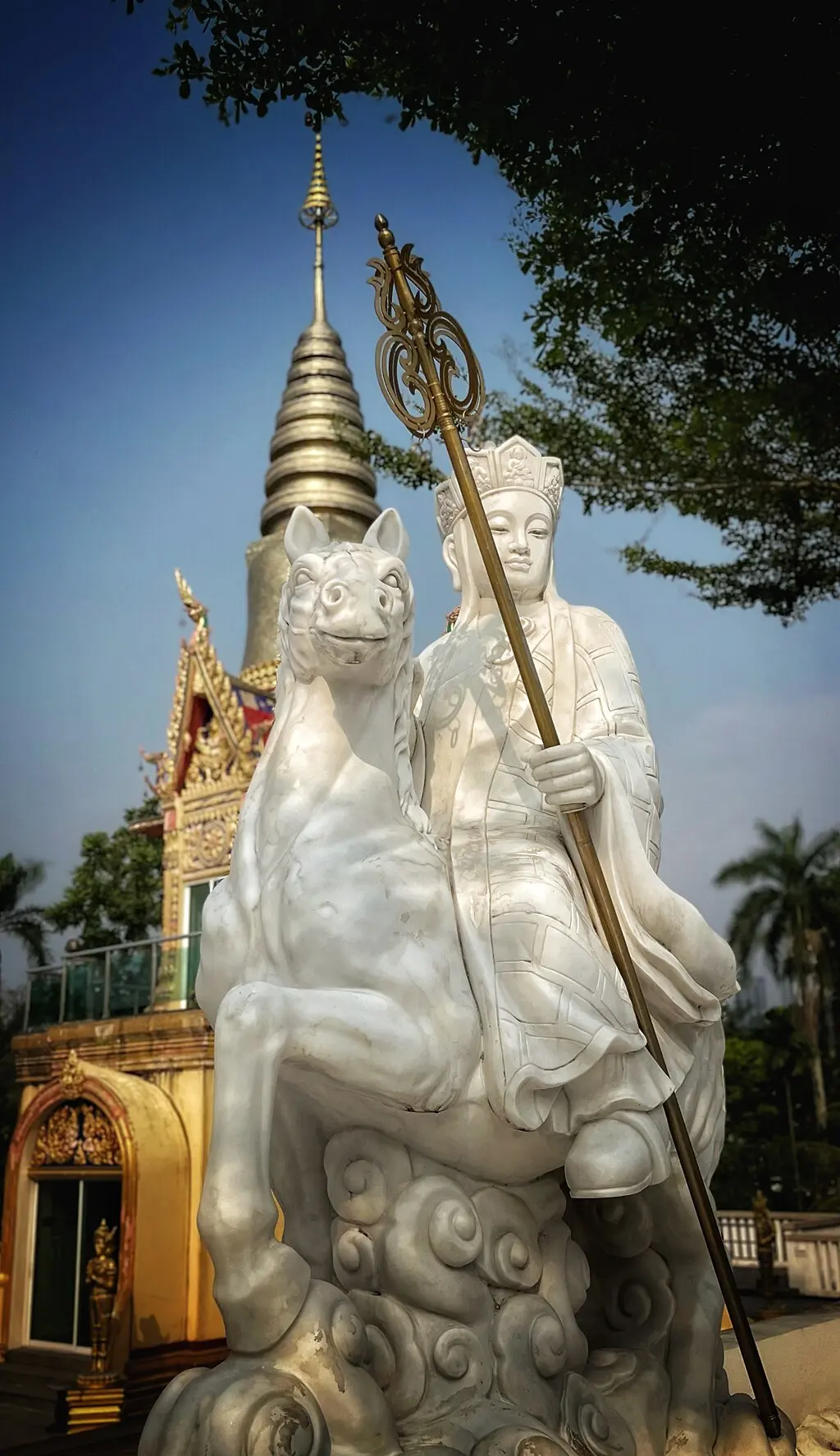
Tang Sanzang
Tang Sanzang, also known as Tripitaka , stands at the heart of “Journey to the West” as its protagonist. His mission to retrieve sacred Mahayana Buddhist scriptures from India serves as the narrative’s driving force. Tang Sanzang embodies virtues such as humility, compassion, and unwavering dedication to his spiritual quest.
His portrayal as the epitome of piety and moral integrity offers a rich canvas against which his interactions with disciples and various challenges unfold.
Tang Sanzang’s personality is a blend of devout faith and moral steadfastness. He is the moral compass for his disciples, guiding them not only towards their external goal but also on their internal journeys of growth and enlightenment .
Despite his virtues, Tang Sanzang is not portrayed as infallible. His naivety and strict adherence to religious doctrines sometimes lead him into trouble, requiring rescue by his more worldly and powerful disciples. This aspect of his character highlights the novel’s exploration of the balance between innocence and wisdom, as well as the necessity of worldly knowledge in achieving spiritual goals.
Throughout the novel, Tang Sanzang undergoes significant development. His journey is not only a physical one across dangerous terrains but also a spiritual odyssey that tests and refines his character. He learns to balance his strict moral codes with the practicalities of the world, growing in understanding and compassion towards his disciples and the beings they encounter.
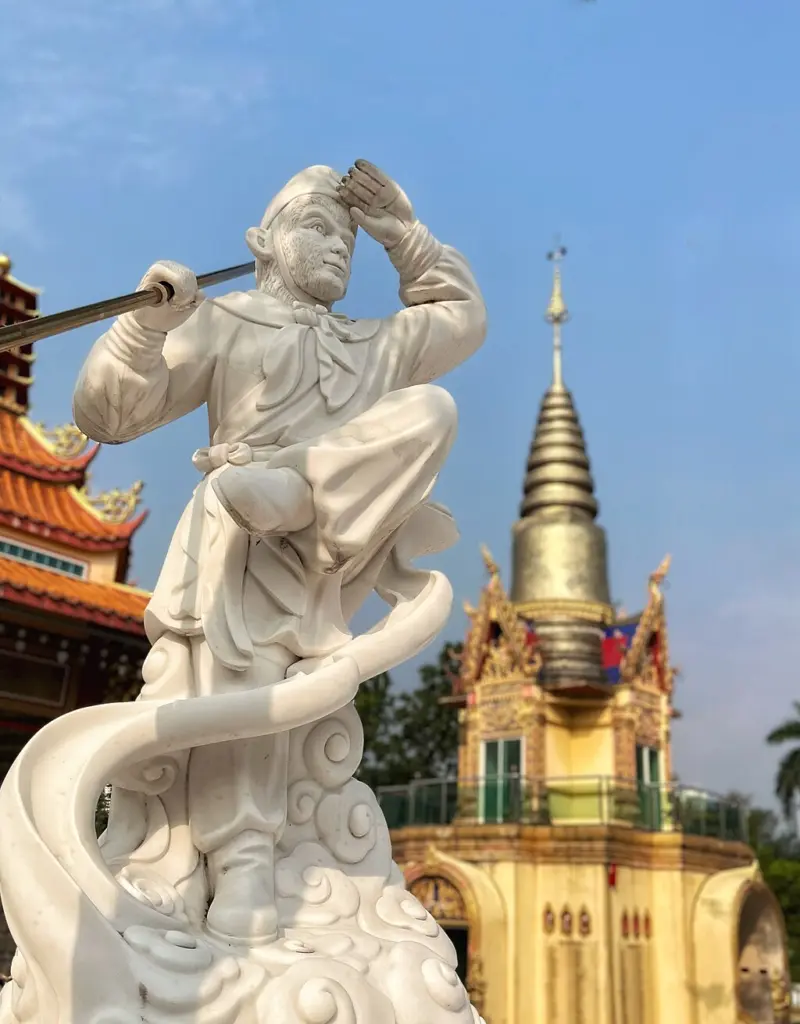
Sun Wukong , famously known as the Monkey King , is one of the most beloved characters in “Journey to the West.”
His origins are as magical as his personality; born from a stone egg on the Mountain of Flowers and Fruit, Sun Wukong acquires supernatural powers through Taoist practices.
His abilities include shape-shifting, immense strength, and the ability to travel vast distances in a single somersault. Despite his powers, Sun Wukong’s early journey is marked by rebellion and pride, leading him to challenge the heavens themselves.
His initial defiance against the celestial order and subsequent punishment—being imprisoned under a mountain by the Buddha—sets the stage for his redemption arc.
His release by Tang Sanzang and commitment to protect the monk on the journey to India is a turning point, marking his transition from a rebellious figure to a devoted disciple. This journey serves as a path of self-discovery and spiritual maturation for Sun Wukong, as he confronts challenges that test his ingenuity, patience, and fidelity.
The Monkey King’s personality is multifaceted; he is cunning and playful, yet capable of profound wisdom and bravery. His loyalty to Tang Sanzang is unwavering, and he becomes the monk’s most powerful protector, using his abilities to overcome demons and obstacles that the pilgrimage encounters. Sun Wukong’s transformation from a mischievous troublemaker to a protector embodies the novel’s themes of redemption and the possibility of spiritual growth regardless of one’s past.
In terms of symbolic significance, Sun Wukong represents the untamed mind and the potential for enlightenment within all beings. His journey from arrogance to enlightenment mirrors the Buddhist path, emphasizing the importance of humility, learning, and devotion.
Through Sun Wukong, “Journey to the West” explores the idea that even the most unruly spirits can achieve enlightenment through perseverance, guidance, and self-reflection.
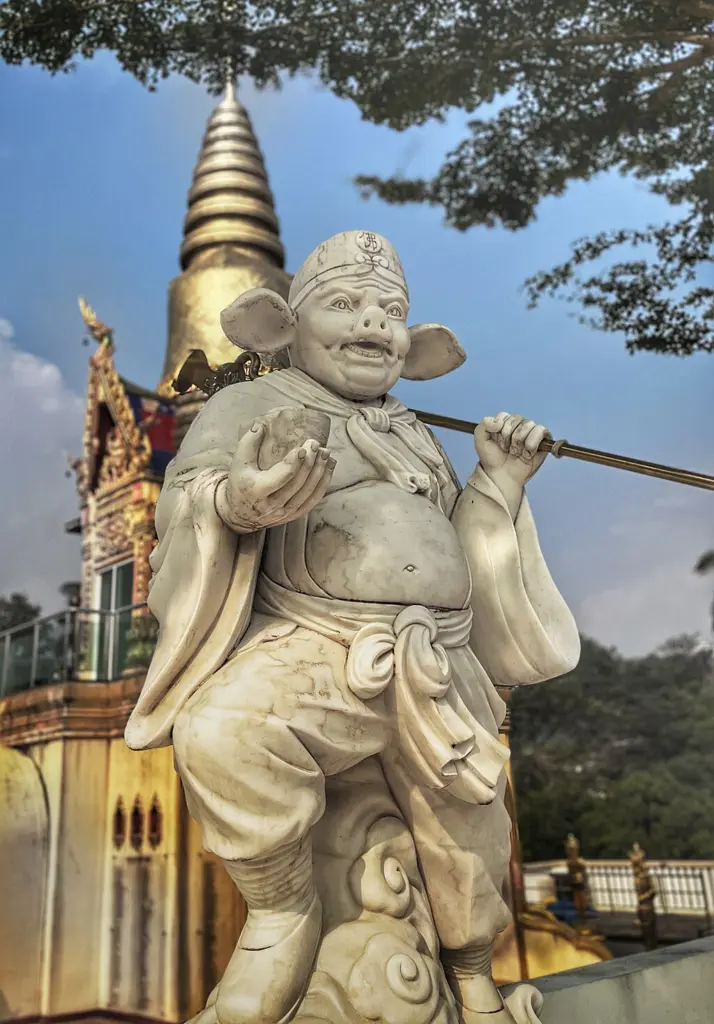
Zhu Bajie, often referred to as Pigsy , is known for his complex and somewhat contradictory character traits. Originally a marshal in the celestial army, Zhu Bajie was banished to the mortal realm as a punishment for his indiscretions in heaven, particularly with the Moon Goddess, Chang’e .
Transformed into a pig-human hybrid, his appearance reflects his base nature and penchant for indulgence, especially in food and women. Despite these flaws, Zhu Bajie becomes one of Tang Sanzang’s disciples, joining the quest to retrieve the Buddhist scriptures from India.
Zhu Bajie’s personality is marked by a mix of bravery and cowardice, loyalty and self-interest, wisdom and folly. He often provides comic relief in the story through his antics and bumbling mistakes, yet his character also displays moments of insight and bravery.
His earthly desires and tendencies towards laziness often put him at odds with his more disciplined and spiritually focused companions, particularly Sun Wukong, with whom he shares a rivalry.
While he deeply respects Tang Sanzang and is committed to the pilgrimage, his weaknesses often lead to complications and challenges for the group. However, these shortcomings make his moments of courage and sacrifice all the more significant, highlighting the theme of redemption and the possibility of moral and spiritual growth regardless of one’s past actions or nature.
Zhu Bajie’s character serves as a reflection on human nature, embodying the struggles between base desires and higher aspirations, between selfishness and altruism. His journey alongside Tang Sanzang is as much about his own redemption and transformation as it is about the physical pilgrimage to India.
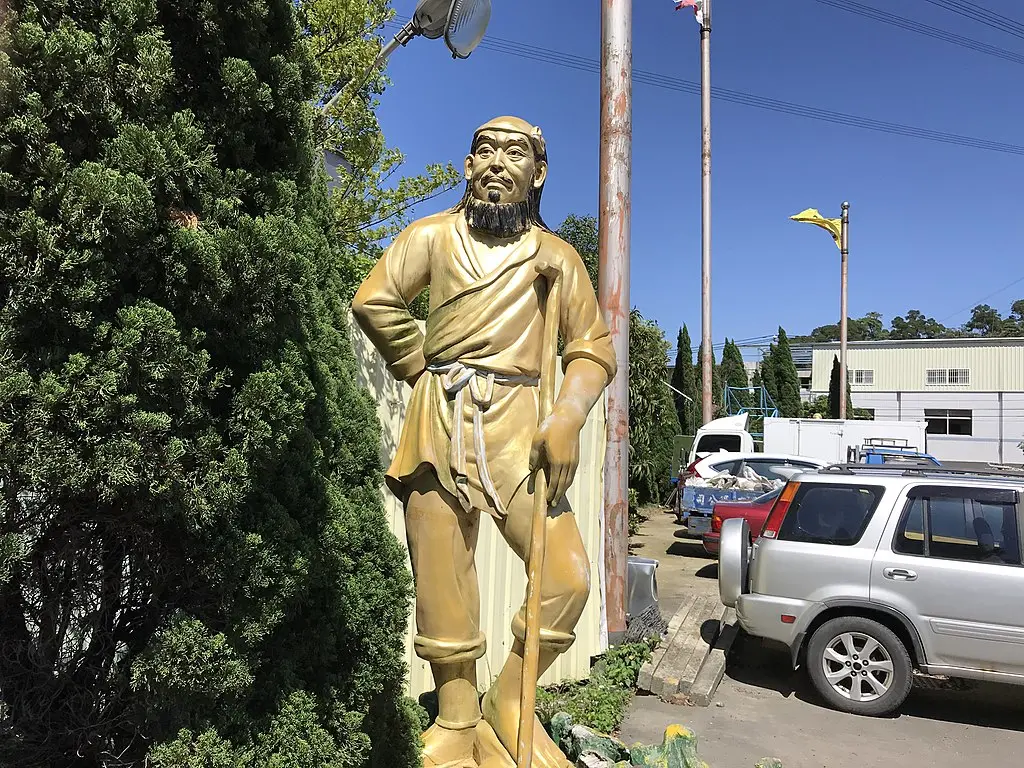
Sha Wujing, or Sandy , is the third disciple who joins Tang Sanzang. Once a celestial general, Sha Wujing was banished to the mortal world as punishment for a transgression in heaven, where he was transformed into a river ogre.
His frightening appearance belies a kind heart and a steadfast, loyal nature. Recognizing his past mistakes, Sha Wujing seeks redemption through service to Tang Sanzang on the perilous journey to the West.
Characteristically, Sha Wujing is the embodiment of stoicism and reliability. Compared to the more flamboyant Sun Wukong and the often comically flawed Zhu Bajie, Sha Wujing’s demeanor is subdued and earnest.
He is less prone to the antics and disputes that sometimes ensnare his fellow disciples, showcasing a level of maturity and wisdom that stabilizes the group. His role is often that of the peacemaker, bridging gaps between his more temperamental companions and ensuring the pilgrimage remains focused on its spiritual goals.
Armed with a magic staff that he uses to combat demons and other threats, he is a formidable fighter in his own right. His knowledge of aquatic environments also proves invaluable, as many of the journey’s challenges take place near or in water.

The Journey to the West
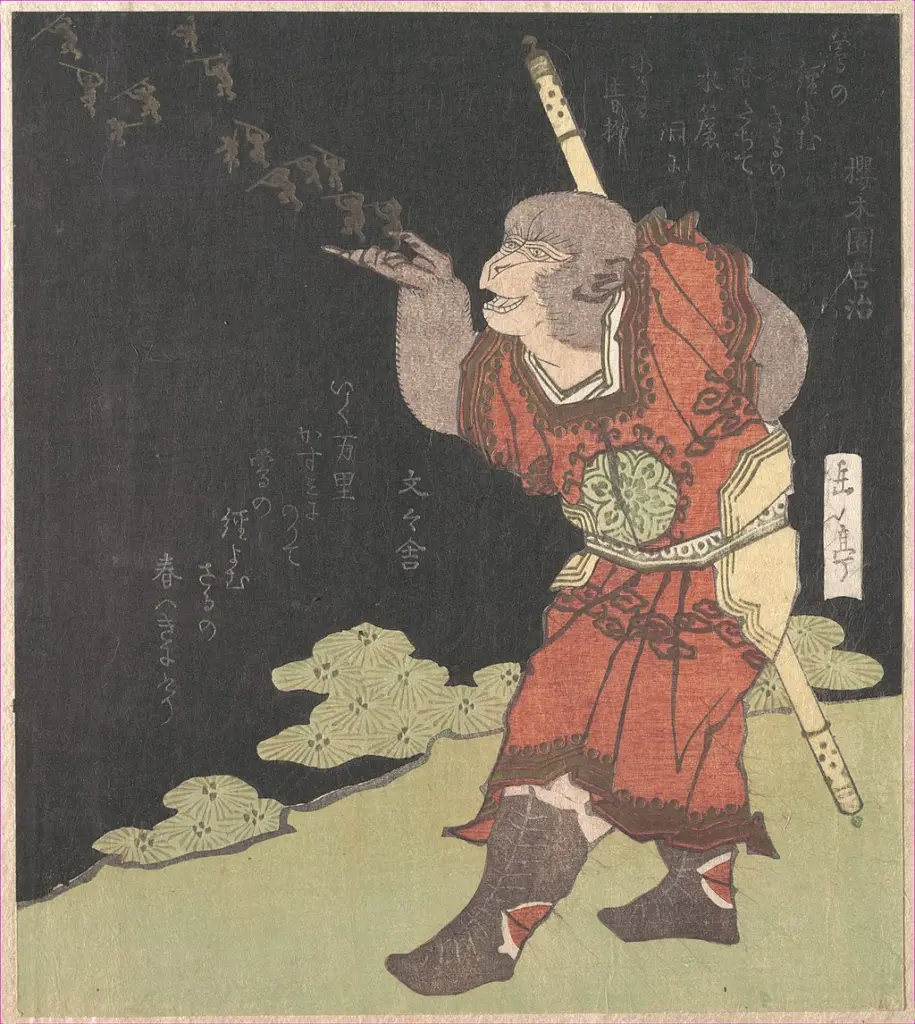
The Origins
In the lush, mystical expanse of the Mountain of Flowers and Fruit, a stone egg, nurtured by the elements and the heavens, gave birth to Sun Wukong, the Monkey King. This miraculous birth marked the beginning of an extraordinary being destined to leave an indelible mark on the realms of gods and mortals alike. Possessing incredible strength, agility, and a keen intellect from birth, Sun Wukong quickly established himself as the king of the monkeys, securing their loyalty through his bravery and wisdom.
Driven by an insatiable curiosity and the fear of death, Sun Wukong embarked on a quest for immortality. His journey led him to the tutelage of a Taoist sage, from whom he learned the secrets of magical arts, shape-shifting, and the way of immortality. These newfound powers, coupled with his natural cunning and prowess, made Sun Wukong a being of unmatched ability.
However, with great power came a great desire for recognition and respect. Sun Wukong’s ambitions soon turned him against the celestial order. Seeking to claim his place among the gods and immortals, he caused havoc in the heavens, challenging the authority of the Jade Emperor himself. His antics and defiance led to a celestial war between his monkey army and the heavenly forces.
The turmoil caused by Sun Wukong could not go unpunished. Despite his might, he was eventually captured by the combined efforts of the Buddha and the celestial army. To curb his rebellious spirit, Buddha imprisoned Sun Wukong under the Five Elements Mountain, sealing him with a magical spell for five hundred years. This punishment was not just a consequence of his actions but also a pivotal moment of transformation. Under the mountain, Sun Wukong was forced to reflect on his deeds and the consequences of his unchecked ambition.
This period of imprisonment was a crucible, tempering Sun Wukong’s fiery spirit with a newfound understanding of responsibility and the importance of humility. It was here, in the shadow of his actions and under the weight of the mountain, that the foundation was laid for his redemption and eventual role as a protector on the journey to the West.
The Calling of Tang Sanzang
In the empire of the Tang Dynasty, under the watchful eyes of celestial beings, the birth of Tang Sanzang was foretold with a prophecy. He was destined to be no ordinary monk, but one whose journey would mark a pivotal moment in the spiritual fabric of the world. From an early age, Tang Sanzang displayed an uncommon devotion to his Buddhist faith, his heart set on understanding the deepest truths of existence and alleviating the suffering of all beings. His life was filled with piety, scholarship, and an unwavering commitment to the path of enlightenment, setting him apart as a vessel for divine purpose.
The turning point in Tang Sanzang’s life came through a divine revelation, where the Bodhisattva Guanyin presented him with a mission of paramount importance. He was to travel to the Western regions of India to retrieve sacred Buddhist scriptures not yet available in China . These texts held the key to deepening the spiritual understanding and salvation for countless souls in his homeland. This was not just a journey across lands; it was a pilgrimage that would test the limits of his faith, endurance, and spirit.
The gravity of this mission was clear; the scriptures were vital for the propagation of Buddhism in China, promising a new era of spiritual insight and enlightenment. However, the path to the West was fraught with perils beyond imagination—demons, treacherous landscapes, and trials that would challenge the very essence of his being. It was a journey that no one could undertake alone and survive, let alone succeed.
Recognizing the monumental challenges that lay ahead, the Bodhisattva Guanyin promised Tang Sanzang divine assistance in the form of disciples who would protect and guide him through the dangers. These disciples, each with their own paths to redemption and enlightenment, were destined to be united with Tang Sanzang, forming an unlikely fellowship bound by a shared mission.
Thus began Tang Sanzang’s journey, a quest that was not only his own but one that carried the hopes and spiritual aspirations of the entire Buddhist community. With the divine mandate bestowed upon him, Tang Sanzang set forth, stepping into the annals of legend.
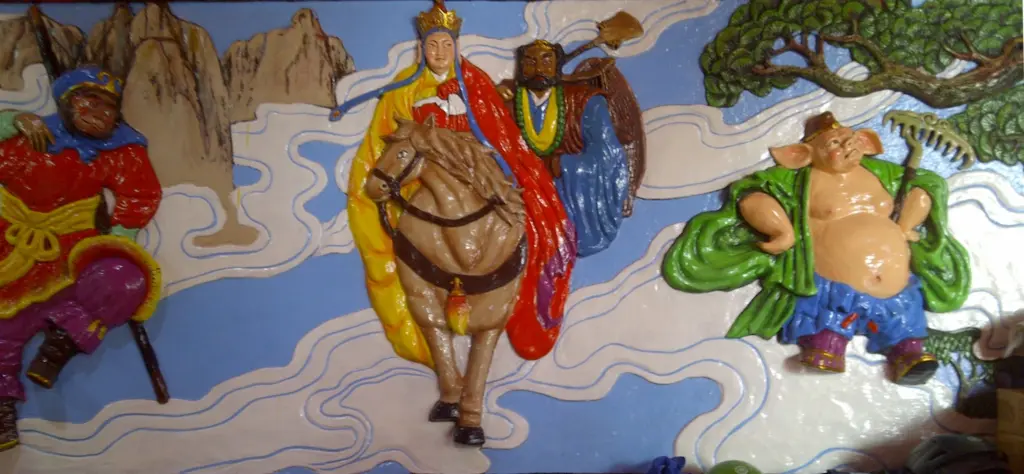
Assembling the Disciples
As Tang Sanzang began his perilous journey to the West, the first to join him was none other than Sun Wukong, the Monkey King. Freed from his five-century imprisonment under the Five Elements Mountain by Tang Sanzang himself, Sun Wukong was bound to him by a vow. This vow, forged in the fires of redemption (and the head-tightening band), was Sun Wukong’s promise to protect Tang Sanzang throughout the journey. The release symbolized not only Sun Wukong’s second chance but also the formation of an unbreakable bond between the disciple and his master. With his unparalleled martial prowess and magical abilities, Sun Wukong was a formidable protector, one whose loyalty and dedication to Tang Sanzang’s mission were beyond question.
The next to join this celestial mission was Zhu Bajie, once a marshal in the heavens, now living as a half-human, half-pig being as punishment for his lascivious behavior in the celestial realm. Encountered by Tang Sanzang and Sun Wukong, Zhu Bajie was persuaded to join the pilgrimage, seeking redemption for his past misdeeds.
Sha Wujing, the third disciple, was once a celestial general who, due to a grave mistake, was banished to a river, taking the form of a fearsome water ogre. His encounter with Tang Sanzang and the promise of redemption through service transformed Sha Wujing from a feared monster into a loyal disciple.
Together, these three disciples, each with their unique strengths, weaknesses, and backgrounds, formed the core of Tang Sanzang’s entourage. Their assembly was no mere coincidence but a divinely orchestrated gathering of souls seeking redemption, enlightenment, and the fulfillment of a sacred mission.
Trials and Tribulations
As Tang Sanzang and his newly assembled disciples embarked on their journey to the West, they were soon met with a series of trials that tested their resolve, unity, and individual capabilities. These challenges served not only as obstacles to be overcome but also as crucibles for character development and bonding among the pilgrims.
One of the first major trials they faced was the Black Wind Mountain, where a fierce demon known for capturing and eating travelers threatened their mission. It was here that Sun Wukong’s prowess and quick thinking were first put to the test, showcasing his ability to protect Tang Sanzang against seemingly insurmountable odds.
Another significant challenge came in the form of the White Bone Demon, a creature capable of changing its form to deceive and capture Tang Sanzang. This trial tested not only the physical strength of the disciples but also their wisdom and ability to see through deception.
These early trials also brought to the forefront the dynamics and interactions among the disciples. Sun Wukong’s impulsive nature and readiness to use force were often at odds with Tang Sanzang’s more compassionate and pacifistic approach, leading to tensions within the group. Zhu Bajie and Sha Wujing, each with their distinct personalities and strengths, found themselves navigating the complex dynamics between their desire for redemption and the often chaotic leadership of Sun Wukong.
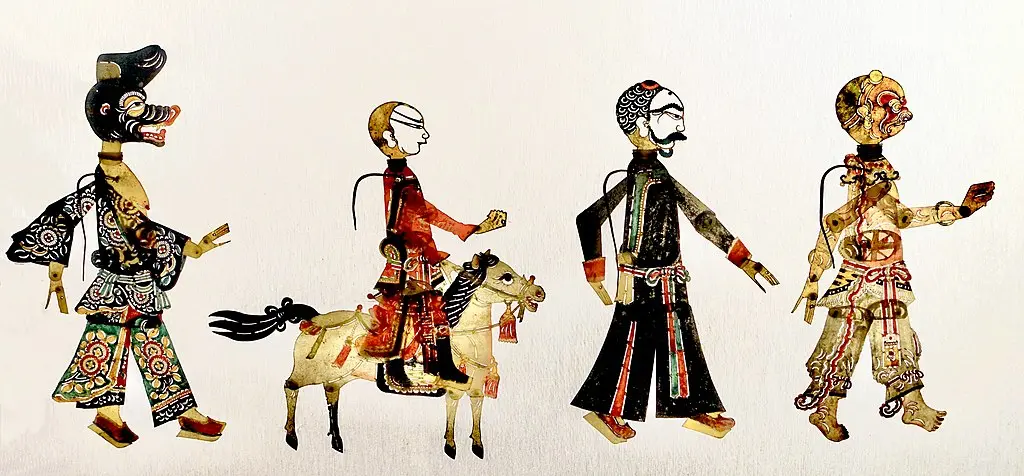
The Final Challenges
As Tang Sanzang and his disciples neared the end of their epic quest to retrieve the sacred scriptures from the West, they encountered the Fiery Mountain, a vast barrier of flames that seemed insurmountable. This natural obstacle was a metaphor for the burning trials of the spirit, a test of their resolve and unity. To pass, they needed the fan of the Princess Iron Fan, a task that proved to be as much about diplomacy and wisdom as it was about strength and courage. The quest for the fan was marked by deception and challenges that tested their patience and ingenuity, especially for Sun Wukong, whose confrontations with the Princess pushed him to find non-violent solutions.
Following this, the pilgrims faced the ordeal of the Tenfold Maze, a bewildering labyrinth that tested their mental endurance and faith. The Maze, crafted by powerful magic, represented the inner confusions and doubts that can lead one astray from the path of enlightenment. Each turn and dead end forced the disciples to rely not just on Sun Wukong’s strength or Zhu Bajie’s might, but on Tang Sanzang’s unwavering faith and Sha Wujing’s quiet determination. It was their unity and collective wisdom that eventually led them through the maze, symbolizing the triumph of shared purpose over individual despair.
Perhaps the most significant trial came in the form of a spiritual challenge directly from the Buddha. Before granting them the scriptures, Buddha tasked Tang Sanzang and his disciples with a final test of their virtues and understanding of the Buddhist teachings. This trial was not about battling demons or overcoming physical barriers but confronting their inner selves and the essence of their journey. Each disciple, including Tang Sanzang, faced manifestations of their past errors, fears, and desires, challenging them to apply the lessons of compassion, humility, and perseverance they had learned on their journey.
The confrontation with their inner demons was a profound moment for the pilgrims, especially for Sun Wukong, whose journey from rebel to protector had been fraught with pride and anger. For Zhu Bajie, it was a moment to transcend his baser instincts and desires, while Sha Wujing confronted the solitude and obscurity of his existence with newfound peace. For Tang Sanzang, it was the ultimate test of his faith and his commitment to his mission, proving his worthiness to receive the sacred texts.
Arrival in the West
After overcoming the final, daunting challenges set before them, Tang Sanzang and his disciples reached their sacred destination in the West. It was here, in the presence of the Buddha, that they were finally granted the sacred scriptures.
The attainment of the sacred scriptures was an achievement of monumental significance. For Tang Sanzang, it represented the fulfillment of a divine mission entrusted to him, affirming his unwavering faith and dedication. The scriptures themselves were not just texts but beacons of wisdom, destined to enlighten countless generations to come. Their acquisition symbolized the bridging of divine knowledge from the West to the East, promising an era of spiritual awakening and understanding for Tang Sanzang’s homeland.
For the disciples, the journey to the West and the acquisition of the scriptures were transformative. Sun Wukong, once a rebellious figure driven by pride and the desire for immortality, emerged as a being of enlightenment, his actions tempered by wisdom and compassion. The journey refined his character, turning his immense power and cunning into instruments of protection and service to a cause greater than himself.
Upon their return to the Tang Empire, the pilgrims were received with reverence. The sacred scriptures were translated and spread, seeding the growth of Buddhism and its teachings throughout the land. The disciples, each awarded divine recognition for their service, achieved a form of enlightenment that transcended their former selves ( Both Sun Wukong and Tang Sanzang were turned into Buddhas .)
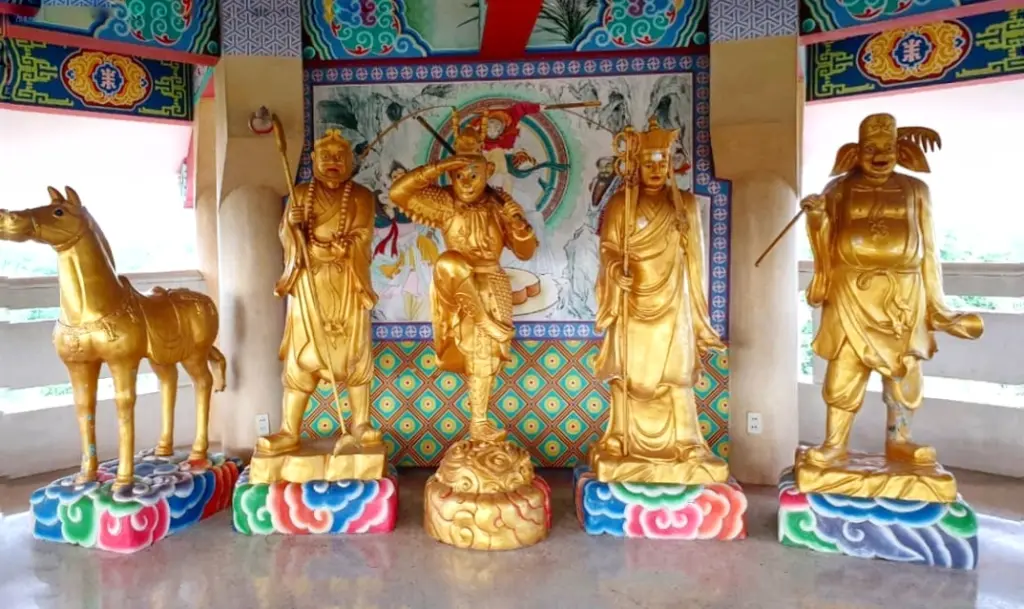
Summary of the Journey to the West
“Journey to the West” is a chronicling of the pilgrimage of the Buddhist monk Tang Sanzang and his quest to retrieve sacred scriptures from India. Alongside him are his three disciples: Sun Wukong, the Monkey King, with his unparalleled martial prowess and magical abilities; Zhu Bajie, the gluttonous and lecherous pig demon with a heart of gold; and Sha Wujing, the steadfast and reliable river demon. Each disciple, once celestial beings now seeking redemption for past transgressions, brings unique strengths and weaknesses to the journey, creating a dynamic and sometimes volatile mix of personalities.
The narrative begins with the birth and rise of Sun Wukong, who, after acquiring magical powers and challenging the heavens, is imprisoned under a mountain by the Buddha for his arrogance. Meanwhile, Tang Sanzang, chosen by the Bodhisattva Guanyin , embarks on a mission to the West to obtain Buddhist sutras that will enlighten the East. Along the way, he liberates and recruits Sun Wukong, Zhu Bajie, and Sha Wujing, who vow to protect him in exchange for their spiritual redemption.
Their journey is fraught with peril, encountering a series of demons and monsters intent on capturing Tang Sanzang for their own gain. Each challenge tests the group’s resolve, faith, and unity, with Sun Wukong’s quick wit and might often saving the day. Despite their differences and the difficulties they face, the pilgrims learn valuable lessons in compassion, patience, humility, and perseverance. These trials serve not only as physical obstacles but as spiritual tests, refining each disciple’s character and strengthening their bonds.
The pilgrimage is marked by significant trials, from battling the fiery Red Boy and outsmarting the cunning Spider Demons to navigating the treacherous Flaming Mountain and the illusion-filled Tenfold Maze. Each ordeal brings them closer together, teaching them the importance of teamwork, sacrifice, and the pursuit of enlightenment.
Upon reaching the West and passing the final tests set by the Buddha, Tang Sanzang and his disciples are granted the scriptures. Their return to the Tang Empire is triumphant, with each disciple achieving enlightenment and recognition for their service. The sacred texts they bring back promise a new era of spiritual awakening for their homeland.
- Loyalty and Devotion: The loyalty of Sun Wukong, Zhu Bajie, and Sha Wujing to Tang Sanzang is a central theme that underscores the importance of fidelity in the face of adversity. Their unwavering commitment to protect their master and ensure the successful retrieval of the sacred scriptures speaks to the value of loyalty in achieving a higher spiritual purpose.
- Perseverance through Trials: The pilgrims’ journey is fraught with challenges that test their resolve, faith, and endurance. Each trial, whether it be a confrontation with demons or overcoming natural obstacles, symbolizes the inner struggles individuals face on their path to enlightenment.
- The Quest for Enlightenment: At its heart, “Journey to the West” is a spiritual odyssey that mirrors the Buddhist path to enlightenment. The journey to retrieve the scriptures symbolizes the pursuit of wisdom and understanding, essential for liberation from suffering and the cycle of rebirth. The transformations of the characters, especially the disciples, reflect the individual’s journey toward enlightenment, marked by self-discovery, repentance, and spiritual growth.
- The Battle between Good and Evil: The frequent encounters with demons and the celestial trials faced by Tang Sanzang and his disciples embody the eternal struggle between good and evil. This theme is not only external, in the battles with literal demons, but also internal, representing the moral and spiritual conflicts within each character.
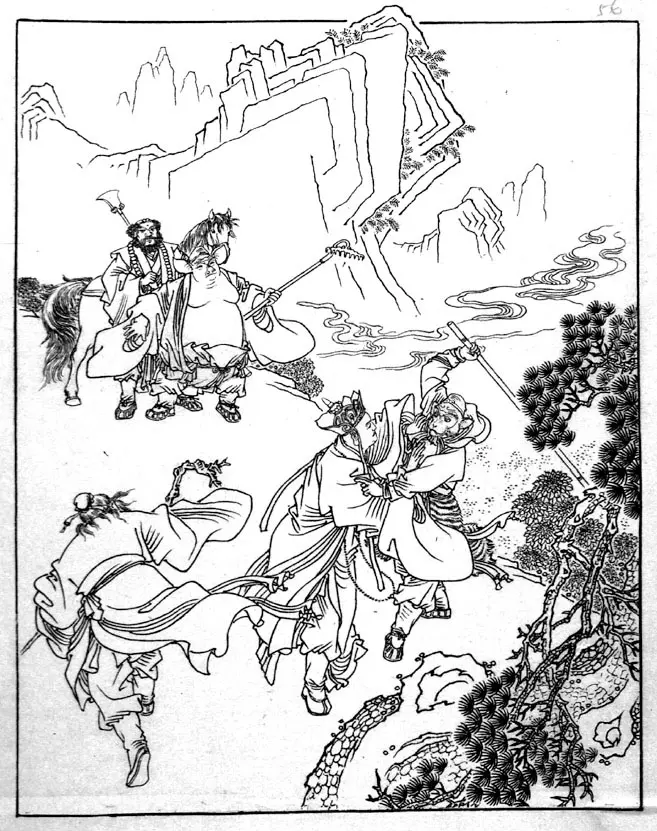
- Characters as Symbolic Archetypes: The main characters of “Journey to the West” are rich in symbolic significance. Sun Wukong, with his rebellious nature and transformative journey, symbolizes the untamed mind and the potential for enlightenment through discipline and self-cultivation. Zhu Bajie represents human desires and flaws, highlighting the struggles and potential for redemption despite one’s imperfections. Sha Wujing embodies steadfastness and humility, qualities essential for spiritual progress.
- Events as Metaphors for Spiritual Lessons: Many of the events and trials encountered by the pilgrims are metaphors for spiritual lessons. For example, the crossing of the Flaming Mountain can be seen as a metaphor for overcoming the burning passions and attachments that hinder spiritual growth. The encounters with various demons can represent the overcoming of personal obstacles on the path to enlightenment.
- The Journey Itself: The journey to the West is symbolic of the Buddhist path towards enlightenment. It is fraught with difficulties and distractions, much like the spiritual journey of an individual.
Moral Lessons
- Redemption and the Potential for Change : The characters of “Journey to the West,” especially the disciples of Tang Sanzang, embody the theme of redemption and the belief in the potential for change. Sun Wukong, Zhu Bajie, and Sha Wujing, each banished for their transgressions, find in their journey an opportunity for transformation. Their willingness to protect Tang Sanzang and endure hardships for the sake of obtaining the sacred scriptures illustrates the possibility of redemption, regardless of past misdeeds. This reflects the Buddhist concept of karma and the idea that positive actions can counteract negative past actions, leading to spiritual growth and liberation.
- Virtue and Moral Integrity : Throughout the novel, Tang Sanzang serves as a moral compass, embodying virtue and moral integrity. His compassion, patience, and unwavering commitment to non-violence, even in the face of danger, highlight the importance of upholding one’s principles. Tang Sanzang’s interactions with demons, often opting for understanding and conversion rather than conflict, reinforce the novel’s message that compassion and wisdom are more powerful than force.
- The Pursuit of Knowledge and Enlightenment : “Journey to the West” places great emphasis on the pursuit of knowledge and enlightenment, both as a personal quest and for the benefit of others. The journey to obtain the Buddhist scriptures symbolizes the quest for spiritual knowledge and truth. This quest is not portrayed as easy or straightforward but rather as a path filled with obstacles that require perseverance, sacrifice, and moral fortitude to overcome.
- Humility and Self-Cultivation : Finally, “Journey to the West” teaches the importance of humility and self-cultivation. The characters, particularly Sun Wukong, learn to temper their pride and recognize their limitations. This humility, coupled with a commitment to self-improvement and spiritual cultivation, is portrayed as essential for growth and enlightenment. The novel thus conveys the moral lesson that true strength and wisdom come from understanding oneself, acknowledging one’s flaws, and striving for self-betterment.
SHARE THIS POST
Read this next.
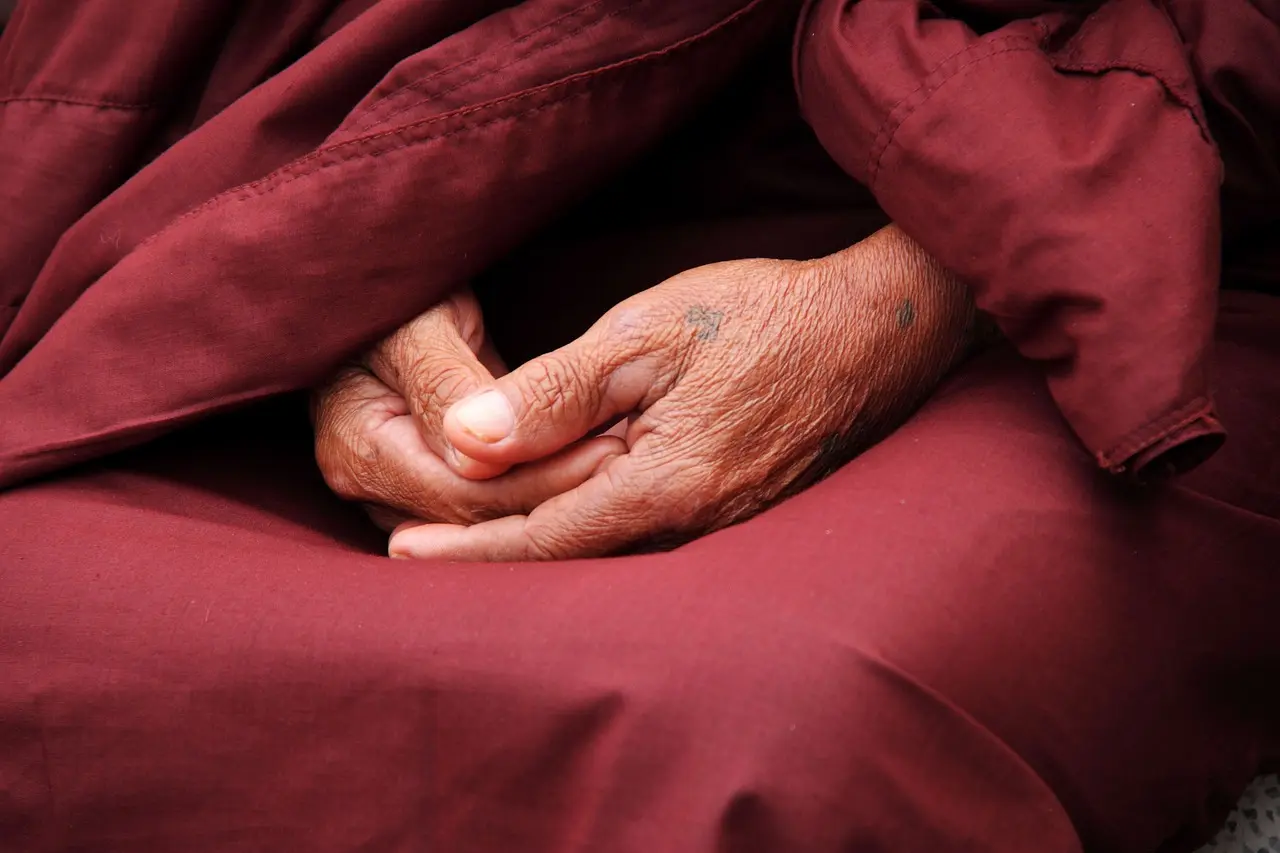
Buddha vs Christ vs Krishna Consciousness | A Deep Dive
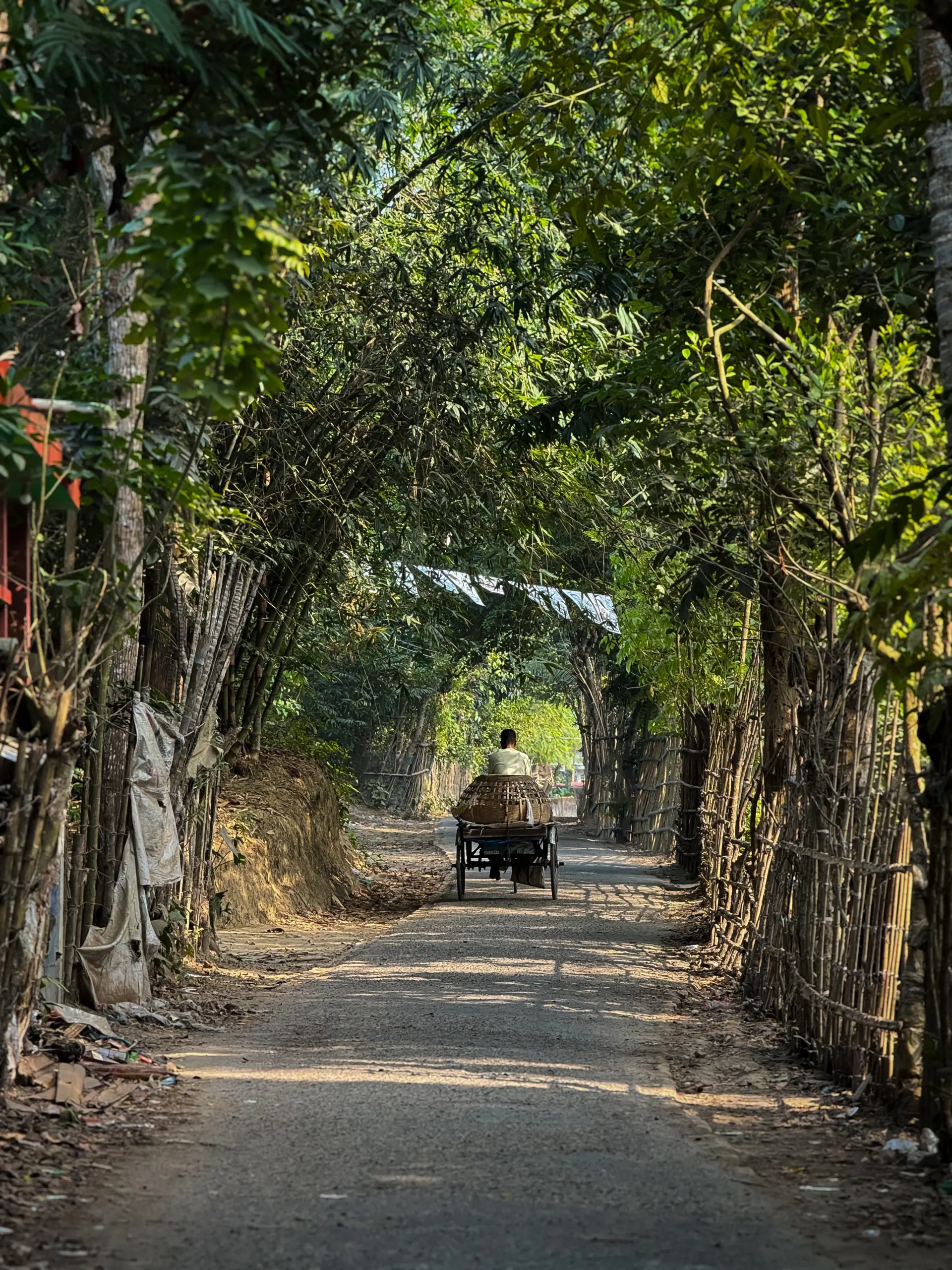
10 Life-changing Reasons Why You Should Go on a Pilgrimage
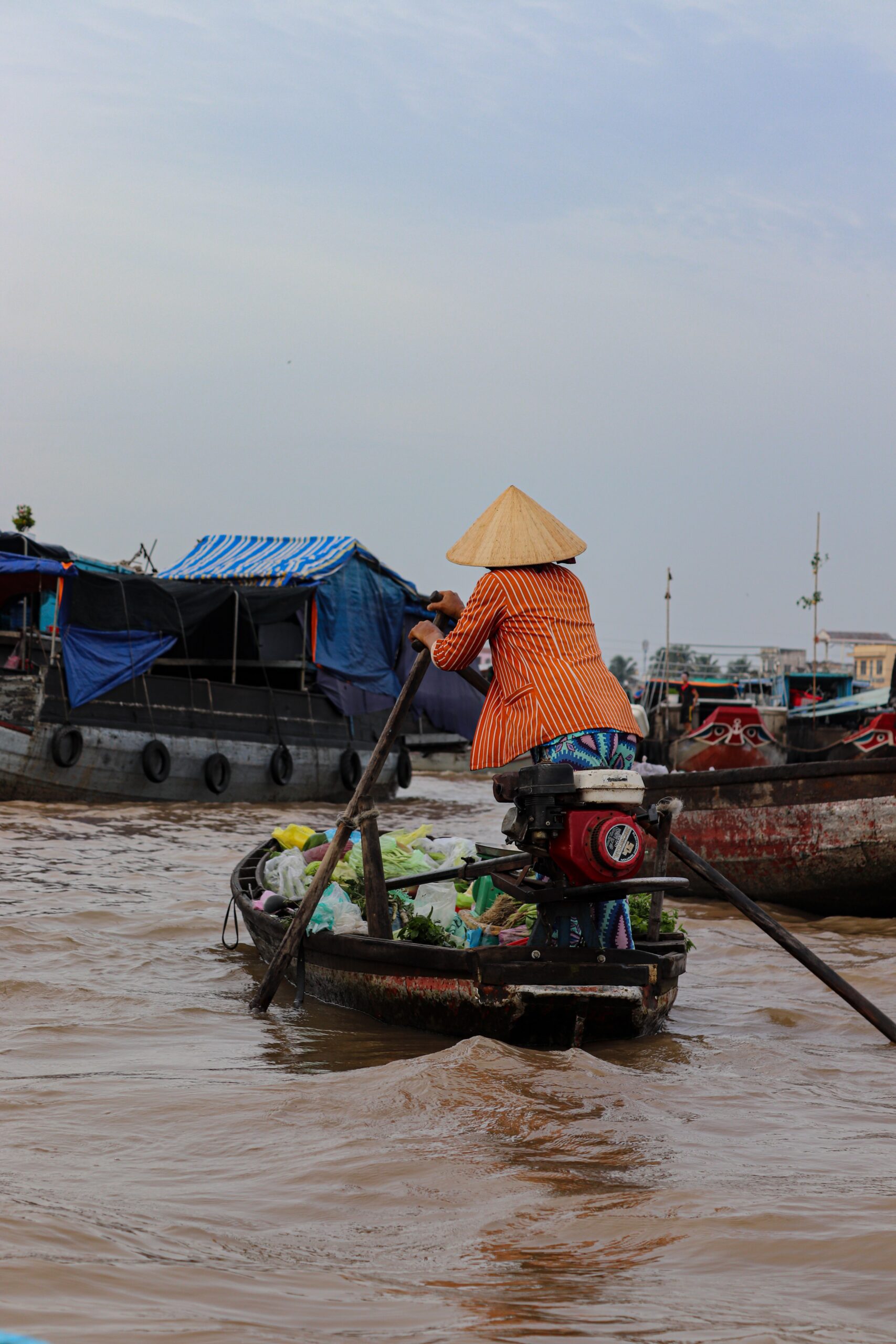
What to Know About Vietnamese Culture | from Food to Customs

Leave a Reply Cancel reply
Your email address will not be published. Required fields are marked *

Hi, I’m Brandon
A conscious globe-trotter and an avid dreamer, I created this blog to inspire you to walk the Earth.
Through tales of travel, cultural appreciation, and spiritual insights, let’s dive into the Human Experience.
RECENT ARTICLES

5 Easy Steps to Get Started with Dreamwork
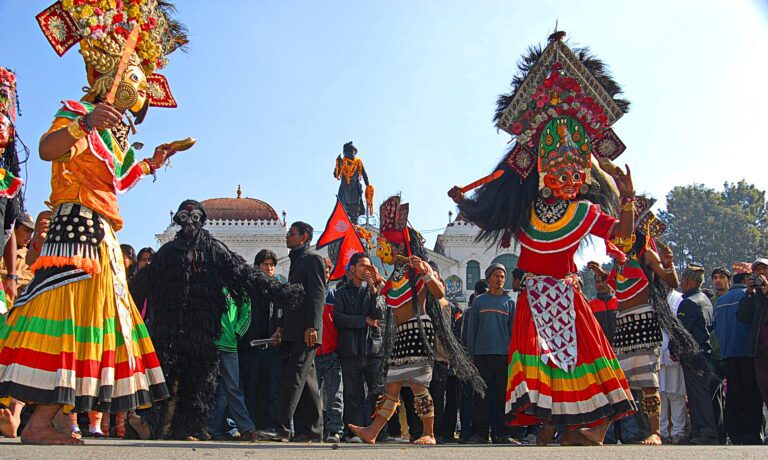
Who are the Newari People? | A Deep Dive into Newari Culture
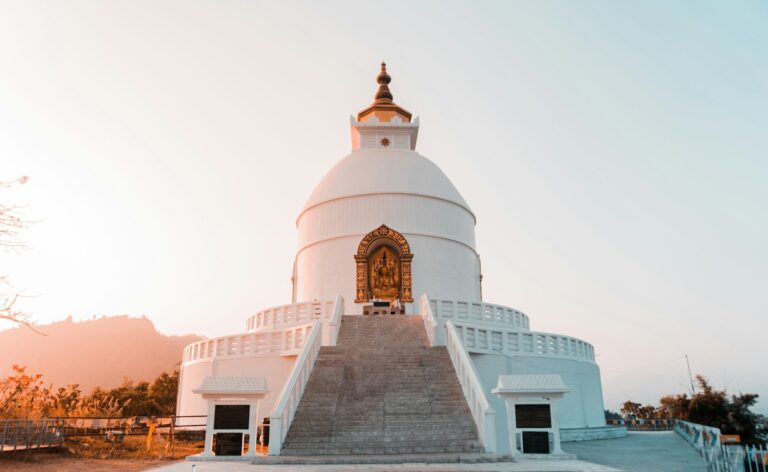
Pokhara World Peace Pagoda Hike | Complete Guide & Map
Popular articles.
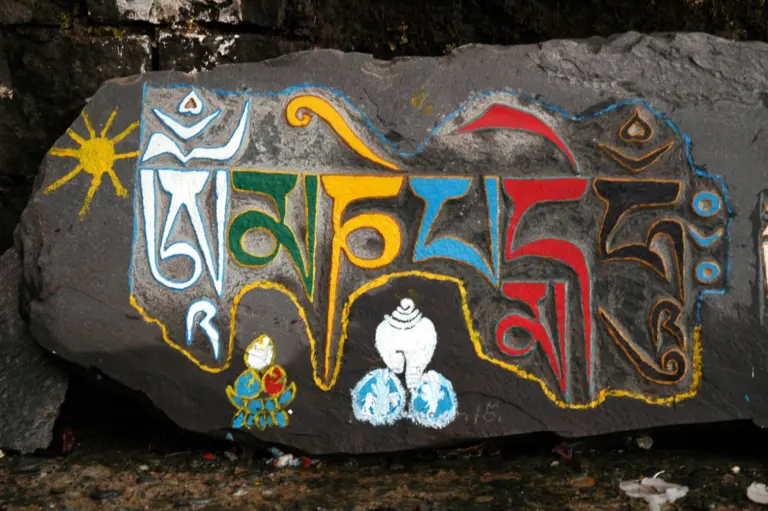
What is the Difference Between a Mantra and a Dharani?

What is the Purpose of the Supertree Groves in Singapore?
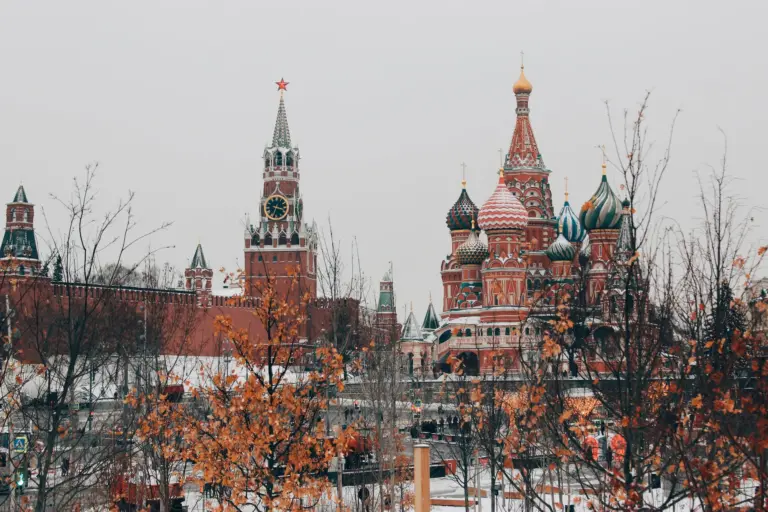
19 Delightful Things to Do in Moscow, Russia | Travel Guide

Spending Christmas and New Year’s in Niseko | Japan Travel Journal
Subscribe for the latest blog drops, photography tips, and curious insights about the world.

© 2023 ALL RIGHTS RESERVED.
- Destinations
- Privacy Policy
Want to get in touch? Feel free to fill in the form below or drop me an e-mail at [email protected]
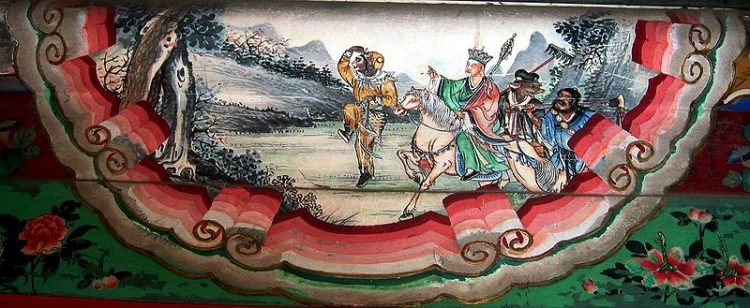
Mythology , Stories , Symbolism
Monkey – Journey to the West
Article by jim pang.
posted by UK, June 10, 2019
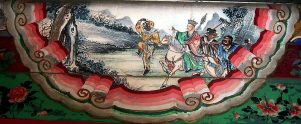
The original Chinese novel, Journey to the West or Xiyou Ji (Chinese: 西游記), literally means ‘West-Wandering Chronicles’ and was written by Wu Cheng’en (吴承恩)in the 16th century. It is one of the Four Great Classical Novels of Chinese literature. The writer was inspired by the true story of a Buddhist monk, Xuanzang (玄奘),from the Tang dynasty (7th – 10th century), who made a solitary pilgrimage to Central Asia and India in search of the original scriptures of Buddha’s teachings. His journey lasted 15 years and resulted in him bringing back 657 Sanskrit texts to China.
The aim of this ‘Journey to the West’ was to reach Vulture Peak and acquire the true scriptures. Buddha, dispirited that “the land of the South knows only greed, hedonism, promiscuity and sins”, instructed the Bodhisattva Guanyin (Avalokiteśvara) to search China for a champion who would bring the Buddhist sutras of wisdom back to the East.
The quest is headed by the main character Tripitaka (the Buddhist monk Xuanzang). On his journey he is guided by Guanyin who inspires an entourage of intrepid travelers to gather around him and agree to serve him as disciples along the journey in order to atone for their sins in past lives. Only with such companionship could Tripitaka take on such a perilous journey. On the way, Tripitaka and his companions face countless adversities and trials as they encounter monsters, ogres, and demons.
Tripitaka or Tang Sanzang (唐三藏):The Three Baskets)
Although he is helpless when it comes to protecting himself, he has the support of his three disciples, Monkey, Pigsy and Sandy. With the help of local inhabitants they help him fight off countless monsters and demons who want to eat his flesh to gain immortality.
Tripitaka’s name refers to the “three baskets” of Buddhist teachings. In the story he represents the triad or higher self, the earth element which symbolizes the ‘heart’. The demons in the story want to eat his ‘pure’ heart which will give them purity to make an elixir of longevity. The kanji character for heart (心) has a dual meaning in Chinese: heart and also mind. He is always trying to be present in the moment – so that his mind and his heart will not be disturbed by the chaotic elements around him. The demons refer to thoughts and emotions that constantly interrupt his efforts. When one tries to be present, the lower self (the demons) will do everything they can to disturb this.
Monkey – Sūn Wùkōng (孫悟空) – means “Monkey Awakened to Emptiness”. It refers to the Buddhist concept of Śūnyatā or the attainment of enlightenment. Awakening to emptiness is to let go of the trappings of the illusory world.
Monkey is by far the novel’s most iconic character. He has a childlike playfulness with a cunning mind. This, coupled with his great power, makes him a trickster hero with a heart of gold. He also has the human fallibility of being greedy, selfish and prone to sudden changes of mood and outbursts of violence. He represents the quality of “rajas”.
Pigsy – Zhū Bājiè (豬八戒: lit. “Pig of the Eight Precepts”) – refers to the eight Buddhist precepts he needs to live by to keep him on a Buddhist path. However, he is greedy, lazy and at the slightest difficulty he wants to quit the journey and go back to the comfortable life he had before. He represents the vices of the lower self and the bodily desires. He represents the quality of “tamas”.
Sandy the Water Demon – Shā Wùjìng (沙悟凈: lit. “Sand Awakened to Purity”) – is a quiet but generally dependable character known to be the most obedient, logical, polite and level-headed. He represents the quality of “Sattva”.
The esoteric and exoteric meaning
The Journey to the West is an esoteric text with many hidden symbolic meanings related to the path of spiritual cultivation, the control of the senses and the lower self, and the principles of self-realization that lead to the discovery of the Real Self. Tripitaka’s disciples are all fallen immortals who have been reincarnated into a world where they have to follow a path of redemption to discover their true selves.
The outer meaning of the story concerns the adventures of the characters, their trials and tribulations, plots, schemes and victories over adversity. It serves an equally important role of providing access to the teachings from all walks of life. I invite you all to take a leap with a Monkey Mind into the journey to the west.
Image Credits: By Wikimedia Commons | CC BY-SA 3.0
Related posts:
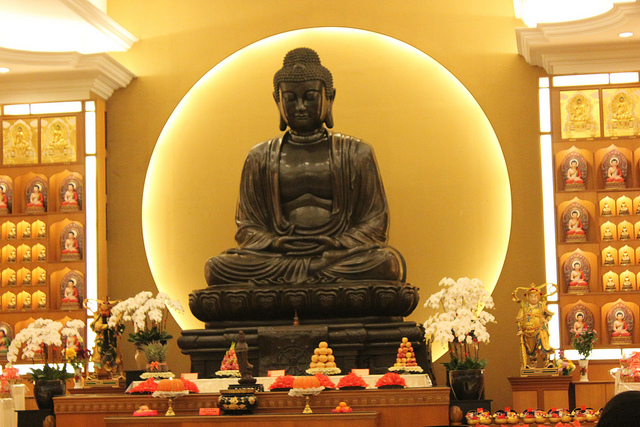
What do you think?
Leave a reply.
Your email address will not be published. Required fields are marked *

- 36 STRATAGEMS
- 中文 (简体)
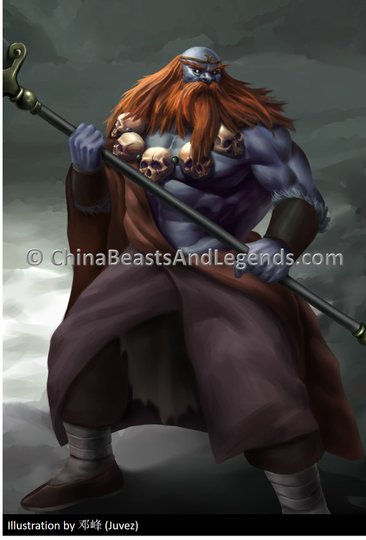
Sha Wu Jing - commonly referred to as "Sandy" in English - is a character from the Journey to the West (西游记 xī yóu jì) who was originally a God, but was cast out of Heaven for breaking a glass Zhan (盏 zhǎn) 1 in a fit of rage.
1 A kind of small decorative cup, often floral in design.
Like Zhu Ba Jie (猪八戒 zhū bā jiè) , Sha Wu Jing was originally a general in Heaven. He held a strange title, Juan Lian General (卷帘大将 juǎn lián dà jiàng) - where Juan Lian translates literally to "roll-up curtain" 2 - and served under the Jade Emperor (玉帝 yù dì).
2 There is much debate over the meaning behind, and the rank of, the bizzare title "Roll-up Curtain General." Basically there are two schools of thought, the first being that this is a lowly title, held by a servant of the Jade Emperor who literally opens curtains, and other such fabrics/obstacles, as the Jade Emperor enters a room or wants to look out of a window, for example. The second is that this title belongs to a close and trusted advisor of the Jade Emperor, much like a secretary to the CEO, and is a noble title. On a personal note, given that Sha Wu Jing was exiled to Earth for merely breaking a glass Zhan, I lean toward the former.
Before being exiled to Earth, the Jade Emperor had him struck 800 times with a rod and reincarnated him as a man-eating sand demon.
Sandy 沙悟净 (shā wù jìng)
Status: deity turn demon turn arhat, gender: male, pronunciation: (audio file coming soon), best known for: aiding tang seng.
Do you have any questions or feedback regarding this content? Get in touch and let me know, I'll get back to you as soon as I can.
COPYRIGHT NOTICE
All images shown on this website are watermarked for a reason, they are original art work created by the artist shown at the bottom of each image, and are the property of www.chinabeastsandlegends.com. All right reserved. Should you wish to use these images, commerically or otherwise, please contact me .
In addition, all content shown on this website was painstakingly researched and though much of this information is already in the public domain, all of it has been translated and/or interperated by myself and has taken countless hours to create. If you wish to re-use any content, please contact me first and request persmission . Please do not steal.
Home > Collection > Sha Wu Jing
In addition, as if all of that wasn't enough, every seventh day he suffered another punishment called "Ten Thousand Arrows Through the Heart" (万箭穿心 wàn jiàn chuān xīn) which was exactly what it sounds like - a bunch of arrows (ranging from 7 to 10,000 depending on which source you read) came down from Heaven and pierced through his heart causing a tremendous amount of pain. As a result of this punishment, he spent most of his time living under water in the Quicksand River (流沙河 liú shā-hé) in order to avoid the arrows, on a diet mainly consisting of human passers-by.
Sha Wu Jing is desribed as having dark blue skin, a large flame-red beard, and two large eyes that shine like lights. He stands about four meters tall, has a thundering voice much like that of an old dragon, has nine skulls 3 hanging around his neck, and wields the Magic Demon-Destroyer Staff (降妖宝杖 jiàng yāo bǎo zhàng).
3 A group of nine monks embarked on a pilgrimage west to obtain the scriptures that took them past Quicksand River. Sha Wu Jing killed them all and ate their flesh, all the way down to the bones. However, unlike his other victims' bones, the monks' skulls floated to the top of the water and wouldn't sink. This amused Sha Wu Jing. So he decided to make a necklace out of their skulls and could often be seen playing with them when he was bored.
As the story goes, one day, Guan Yin (观音 guān yīn) came to Earth searching for bodyguards for Tang Seng (唐僧 táng sēng) to protect him on his pilgrimage to the west. Sha Wu Jing (who wasn't named up until this point) was recruited and requested to wait until Tang Seng, Zhu Ba Jie and the Monkey King (孙悟空 sūn wù kōng) arrived.
Soon Sha Wu Jing became Tang Seng's third and final disciple, and sworn brothers with Zhu Ba Jie and the Monkey King . Leaving his monstrous tendencies behind, he became an indispensable member of the team. Though he wasn't as strong as the other two, he wasn't as rebellious as the Monkey King , nor was he as lazy and lustful as Zhu Ba Jie . He protected Tang Seng with integrity, worked hard, held no grudges, and committed countless selfless acts in the name of their quest. His loyalty never wavered.
In the end, as payment for his service, Buddha granted him entrance to Heaven and transformed him into an arhat (罗汉 luó hàn) 4 called the Golden-bodied Arhat (金身罗汉 jīn shēn luó hàn).
4 In Buddhism, an arhat is one who has gained insight into the true nature of existence and has achieved nirvana.

IMAGES
VIDEO
COMMENTS
As the novel progresses, all 3 disciples transform along the path of Buddhism. They start enmeshed in the five hindrances and made mentally ill by the 3 poisons. Pigsy is easy; he represents the mental poison/hindrance of of Sensory Desire, the attempt to seek happiness through engaging the senses.
Thanks for exploring this SuperSummary Study Guide of "Journey to the West: Volume I" by Wu Cheng'en, Transl. Anthony C. Yu. A modern alternative to SparkNotes and CliffsNotes, SuperSummary offers high-quality Study Guides with detailed chapter summaries and analysis of major themes, characters, and more. For select classroom titles, we also provide Teaching Guides with discussion and quiz ...
Tripitaka. Also known as Tan Sanzang, Tripitaka is the protagonist of Journey to the West. He is a pious Buddhist monk chosen by the Buddha to deliver his scriptures from their home in India to ...
Since its initial publication, literary scholars have detailed the numerous symbols within Hsi-yu chi ( Xiyouji ), or The Journey to the West, that are specifically related to Buddhism, Taoism, and Confucianism. Many point out that the pilgrims—Monkey, Tripitaka, Pigsy, Sandy, and the dragon-turned-horse—represent the five elements of wood ...
Antagonists Demon King of Confusion. The Demon King of Confusion (混世魔王) is a demon king who seizes control of the Water Curtain Cave (水簾洞) when Sun Wukong left to learn magic from Subhuti.He chases away the primates and occupies the cave with his minions. Many years later, Sun Wukong returns, defeats the demon king and takes back the cave.
Journey to the West (Chinese: 西遊記; pinyin: Xīyóujì) is a Chinese novel published in the 16th century during the Ming dynasty and attributed to Wu Cheng'en.It is regarded as one of the greatest Classic Chinese Novels, and has been described as arguably the most popular literary work in East Asia. Arthur Waley's 1942 abridged translation, Monkey, is known in English-speaking countries.
Journey to the West, foremost Chinese comic novel, written by Wu Cheng'en, a novelist and poet of the Ming dynasty (1368-1644). The novel is based on the actual 7th-century pilgrimage of the Buddhist monk Xuanzang (602-664) to India in search of sacred texts. The story itself was already a part of Chinese folk and literary tradition in the form of colloquial stories, a poetic novelette ...
Detailed analysis of Characters in Wu Ch'êng-ên, Arthur Waley's Journey to the West (Monkey: Folk Novel of China). Learn all about how the characters in Journey to the West (Monkey: Folk Novel of China) such as Monkey and Tripitaka contribute to the story and how they fit into the plot.
Mr. Ch'ên (Mr. Chen) hosts the pilgrims when they arrive at the River That Leads to Heaven. Monkey saves his daughter from being eaten by the Great King of Miracles. Ch'ên O. Ch'ên O (Chen Wo) is Tripitaka's (Hsüan-tsang's) biological father. He is killed by a bandit, then restored to life by the Dragon King of the Ching River.
Traditionally, Journey to the West is understood as an allegorical tale that offers primacy to Buddhist values and beliefs. However, the story engages all three religions, as the characters gain ...
Journey to the West is a fictionalized account of the legends surrounding the 16-year pilgrimage of the Buddhist monk Xuánzàng (602-664) to India during the Táng dynasty, to obtain Buddhist religious texts (sutras).Xuánzàng reached India after experiencing innumerable trials and hardships. He lived there for more than a decade, studying classics of Buddhism and Indian culture at Nalanda ...
Journey to the West is a beloved novel brimming with a cast of enchanting characters, each bringing their own unique personality, backstory, and purpose to the narrative.These main characters aren't just entertaining and unforgettable; they're also deeply symbolic. They embody various facets of human nature, reflecting the diverse stages and obstacles encountered in a spiritual odyssey.
The rare individual, a hero, ventures out. of the limited environment of the cave and, through a long, and arduous intellectual. journey, finds the light, a higher realm, and discovers a new sense of being. The. importance of the allegory lies in Plato's belief that there are invisible truths lying beyond.
Here are the main characters in 'Journey to the West': Xuanzang: Xuanzang is a monk from the Tang Dynasty who embarks on a perilous journey to retrieve Buddhist scriptures. He is determined and devout, facing numerous challenges along the way. ... Themes and Symbolism in 'Journey to the West' ...
The Process of Earning Redemption. Journey to the West may recount a fictionalized version of historical events; however, Wu Cheng'en's monumental work is an allegory for human striving and ...
The Journey to the West (西游记) is one of the masterworks of classic Chinese fiction. It was written by Wu Cheng'en (吴承恩) in the 16th century CE. Many of the scholars, both Chinese and Western, who have studied the narrative of this Ming era (1368-1644) novel, have considered it to be an epic of myth and fantasy, heavily laden with allegorical meaning.
Despite being a side character, the all-powerful Monkey King steals the show in Wu Cheng'en's allegorical novel Journey to the West.; Over the years, traces of the Monkey King's influence ...
The Journey to the West (西游记) is one of the masterworks of classic Chinese fiction. It was written by Wu Cheng'en (吴承恩) in the 16th century CE. Many of the scholars, both Chinese and Western, who have studied the narrative of this Ming era (1368-1644) novel, have considered it to be an epic of myth and fantasy, heavily laden with allegorical meaning.
Symbolism. Characters as Symbolic Archetypes: The main characters of "Journey to the West" are rich in symbolic significance. Sun Wukong, with his rebellious nature and transformative journey, symbolizes the untamed mind and the potential for enlightenment through discipline and self-cultivation. Zhu Bajie represents human desires and flaws ...
About the Title. Monkey (1942) is the first major English translation of Hsi-yu chi (Xiyouji), or The Journey to the West, by Chinese author Wu Ch'êng-ên (c. 1500-82).Its main character is an immortal stone primate known simply as Monkey. This title distinguishes British translator Arthur Waley's (1889-1966) abridged, 30-chapter version of Hsi-yu chi from Chinese American Anthony C. Yu's ...
The original Chinese novel, Journey to the West or Xiyou Ji (Chinese: 西游記), literally means 'West-Wandering Chronicles' and was written by Wu Cheng'en (吴承恩)in the 16th century. It is one of the Four Great Classical Novels of Chinese literature. The writer was inspired by the true story of a Buddhist monk, Xuanzang (玄奘 ...
Sha Wu Jing - commonly referred to as "Sandy" in English - is a character from the Journey to the West (西游记 xī yóu jì) who was originally a God, but was cast out of Heaven for breaking a glass Zhan (盏 zhǎn) 1 in a fit of rage. 1 A kind of small decorative cup, often floral in design.. Like Zhu Ba Jie (猪八戒 zhū bā jiè), Sha Wu Jing was originally a general in Heaven.
Journey to the West. The powerful and mischievous Stone Monkey King brings chaos to heaven and earth. Freed from a mountain prison in order to guard a Chinese monk on his journey to retrieve the Buddhist scriptures from India, Monkey seeks his own spiritual transformation. Modern performance, contemporary art, and Buddhist philosophers provide ...